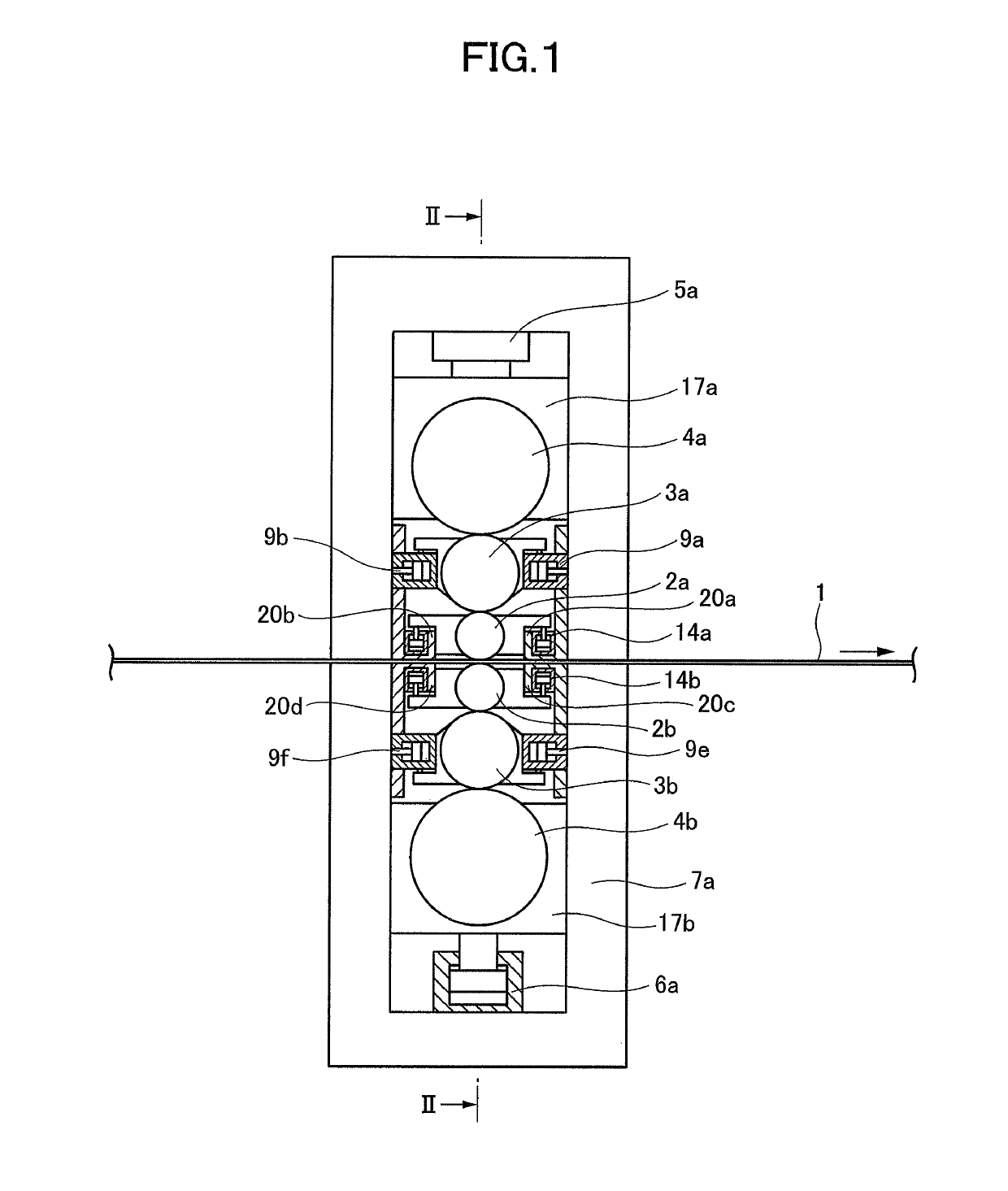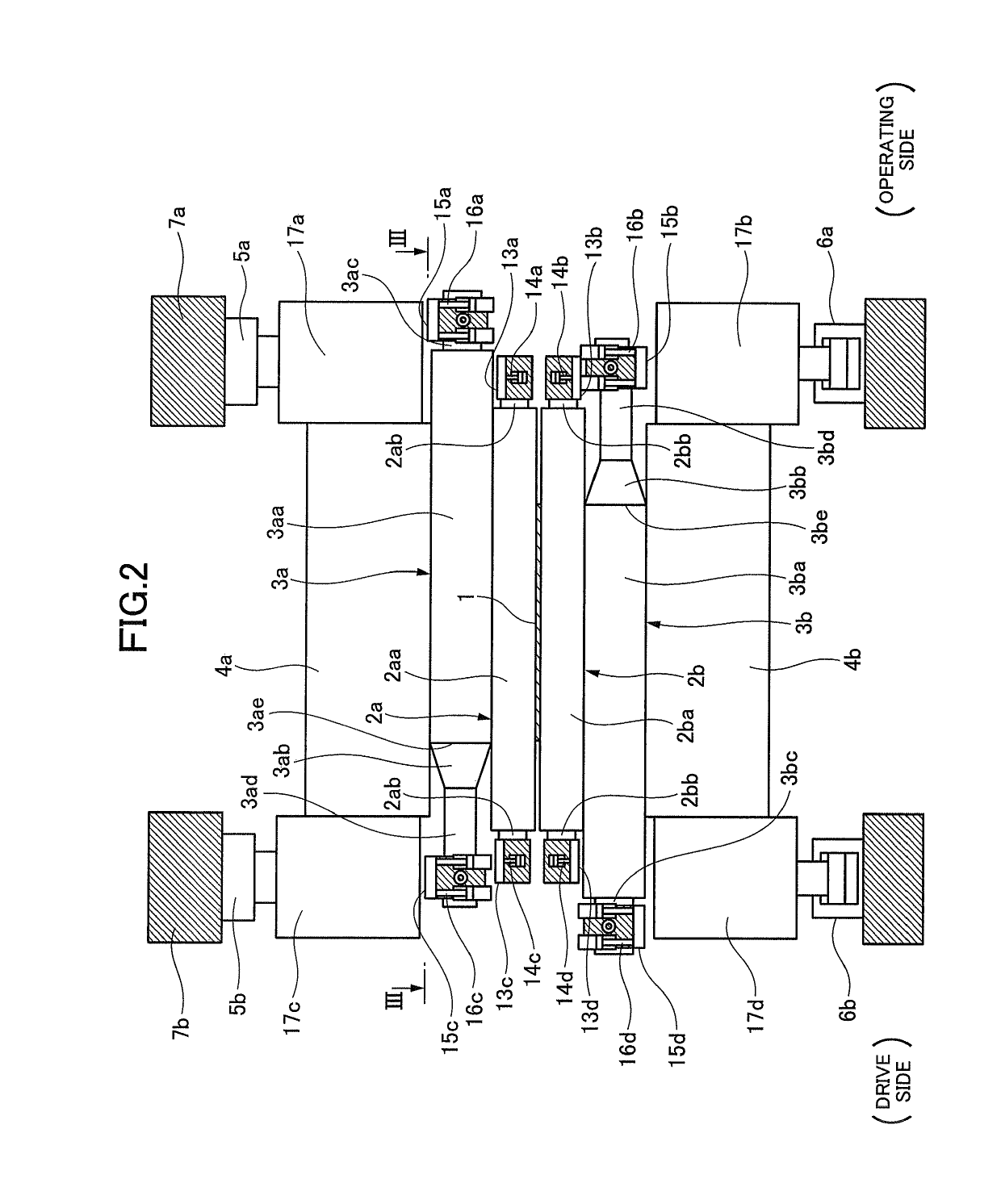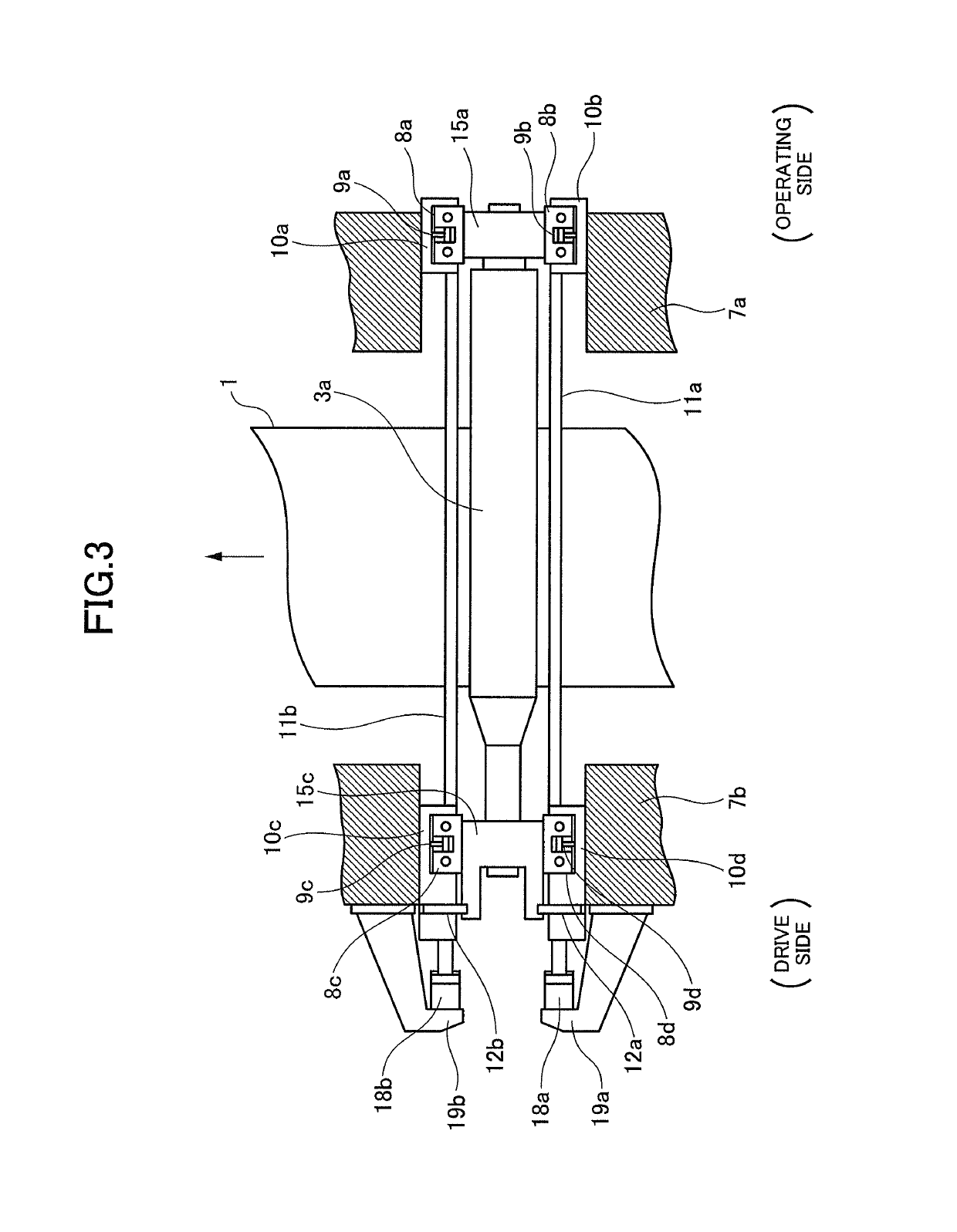Rolling mill and rolling method
a rolling mill and rolling method technology, applied in the direction of measuring devices, profile control devices, manufacturing tools, etc., can solve the problems of insufficient spindle strength, inability to achieve stable rolling, so as to reduce rolling load and good strip shape
- Summary
- Abstract
- Description
- Claims
- Application Information
AI Technical Summary
Benefits of technology
Problems solved by technology
Method used
Image
Examples
embodiment 1
[0047]{Embodiment 1}
[0048]As shown in FIGS. 1 and 2, a six-high rolling mill according to the present embodiment includes left and right (drive side and operating side) housings 7a, 7b as a pair. Upper and lower work rolls 2a, 2b as a pair, upper and lower intermediate rolls 3a, 3b as a pair, and upper and lower back-up rolls 4a, 4b as a pair are rotatably supported inside the housings 7a, 7b. The work rolls 2a, 2b are in contact with and supported by the intermediate rolls 3a, 3b, respectively. The intermediate rolls 3a, 3b are in contact with and supported by the back-up rolls 4a, 4b, respectively. A rolling material 1 which is a hard material conveyed between the housings 7a, 7b are passed between the work rolls 2a, 2b and thereby rolled.
[0049]The upper back-up roll 4a is rotatably supported by bearings (not shown) and bearing chocks 17a, 17c. The bearing chocks 17a, 17c are supported by the housings 7a, 7b via pass line adjusting devices 5a, 5b. In other words, by driving the pa...
embodiment 2
[0102]{Embodiment 2}
[0103]A rolling mill and a rolling method according to a second embodiment of the present invention will be described with reference to FIG. 13.
[0104]The present embodiment has a configuration obtained by adding load cells to the first embodiment, which is shown in FIGS. 1 to 4 and described above. The other features of the configuration are mostly similar to the rolling mill shown in FIGS. 1 to 4 and described above. The same instruments will be denoted by the same reference signs, and redundant description thereof will be omitted as appropriate.
[0105]As shown in FIG. 13, the rolling mill according the present embodiment includes load cells 27a, 27b, 27c, 27d, 27e, 27f, 27g, 27h disposed between the above-mentioned shift blocks and intermediate-roll-offset changing cylinders 9a, 9b, 9c, 9d, 9e, 9f, 9g, 9h.
[0106]Note that the load cells 27b, 27d are disposed on the inlet side in the conveyance direction of a rolling material 1 relative to an upper intermediate r...
embodiment 3
[0118]{Embodiment 3}
[0119]A rolling mill and a rolling method according to a third embodiment of the present invention will be described with reference to FIG. 14.
[0120]The present embodiment has a configuration obtained by adding load cells to the first embodiment, which is shown in FIGS. 1 to 4 and described above. The other features of the configuration are mostly similar to the rolling mill shown in FIGS. 1 to 4 and described above. The same instruments will be denoted by the same reference signs, and redundant description thereof will be omitted as appropriate.
[0121]As shown in FIG. 14, the rolling mill according to the present embodiment includes load cells 28a, 28b, 28c, 28d, 28e, 28f, 28g, 28h disposed between bearing chocks for work rolls 2a, 2b and the projection blocks mentioned above.
[0122]Note that the load cells 28b, 28d are disposed on the inlet side in the conveyance direction of a rolling material 1 relative to the upper work roll 2a. The load cells 28a, 28c are dis...
PUM
| Property | Measurement | Unit |
|---|---|---|
| thickness | aaaaa | aaaaa |
| thickness | aaaaa | aaaaa |
| thickness | aaaaa | aaaaa |
Abstract
Description
Claims
Application Information
 Login to View More
Login to View More - R&D
- Intellectual Property
- Life Sciences
- Materials
- Tech Scout
- Unparalleled Data Quality
- Higher Quality Content
- 60% Fewer Hallucinations
Browse by: Latest US Patents, China's latest patents, Technical Efficacy Thesaurus, Application Domain, Technology Topic, Popular Technical Reports.
© 2025 PatSnap. All rights reserved.Legal|Privacy policy|Modern Slavery Act Transparency Statement|Sitemap|About US| Contact US: help@patsnap.com



